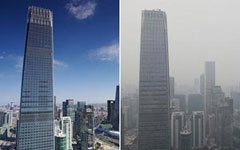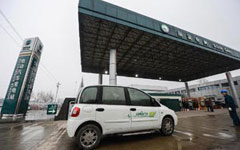Fewer sandstorms give hope for cleaner air
By Harvey Dzodin (China Daily) Updated: 2014-05-23 07:09It is depressing being subjected to Beijing's pollution. The World Health Organization standards for the most harmful particles, PM2.5, say that 20 is the recommended maximum safe level, but we are so used to the stratospheric measurements from both the Beijing government and the US Embassy that even my iPhone app doesn't set off alarm bells until the benchmark of 200 is reached. Pollution masks and expensive air filters are now an increasingly visible everyday fashion accessory for most foreigners and many Chinese. Yet as many folks relocate from Beijing, and many more think of doing so, I think of sandstorms and have hope!
|
 |
 |
There haven't been any appreciable sandstorms now for a number of years. While we may suffer from air-pocalypse at least we haven't recently fallen victim to "sand-ageddon" as British tabloids called it earlier this year when sand from the Sahara desert, 3,000 kilometers away, covered cars and people alike in Britain.
There were prodigious winds recently that all but blew me over, no easy task. Yet, remarkably, I couldn't detect a grain of sand. The reason that I am hopeful is that this result was no accident, but due to the hard work of governmental and scientific experts who reversed desertification of previously green areas and reclaimed them by planting trees and grasses, and using other more ingenious homegrown methods.
Remarkably, 2.6 million square kilometers, more than one-quarter of China's total land area, are deserts. It is scant wonder then that China is the world's leader in desertification. And it comes as no surprise that in 2002 China enacted the world's first law on controlling and preventing desertification. In fact, by 2020 the country plans to reclaim 200,000 square kilometers of desert.
- China 'incredibly innovative' in many areas: Apple CEO
- City official: Guangzhou further committed to opening-up
- Jack Ma: Globalization backed by technology will cut inequality
- HNA confirms interest in ASEAN's infrastructure investment
- Comments on Xi's letter to 2017 Fortune Global Forum
- China to create more opportunities for the world: Xi
- US tax cuts impact on China two-sided: economists
- Chinese enterprises job fair to be held in Sri Lanka

















